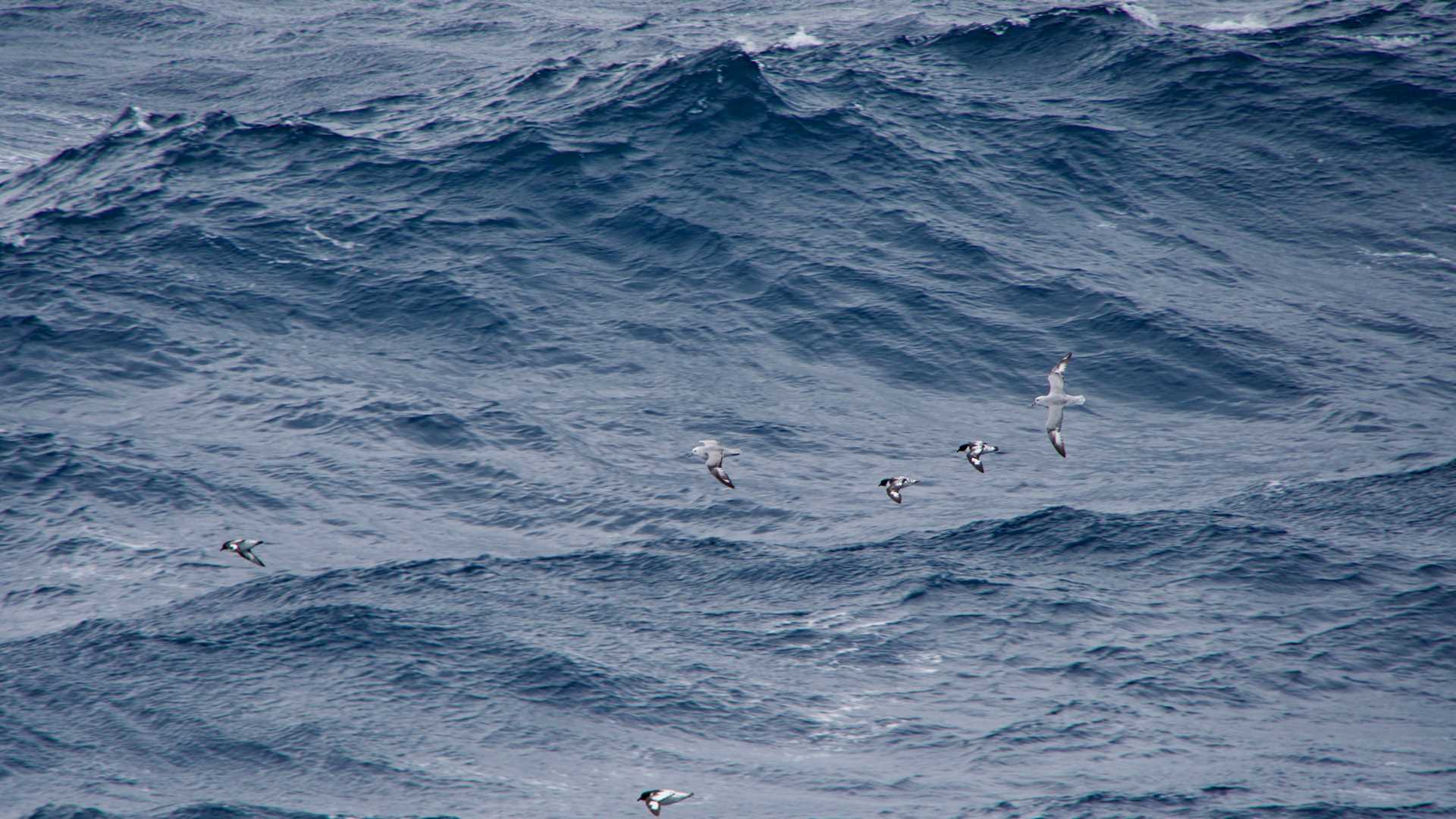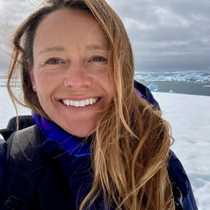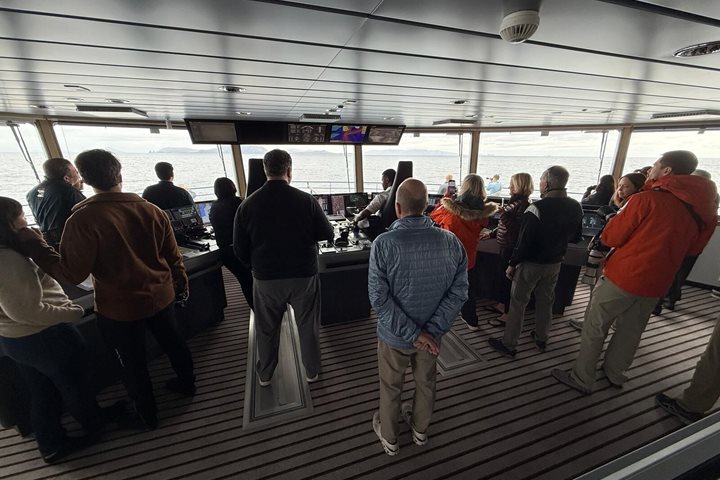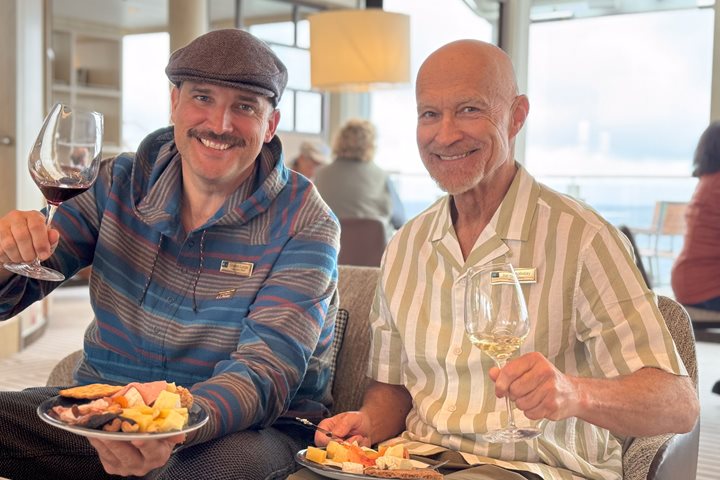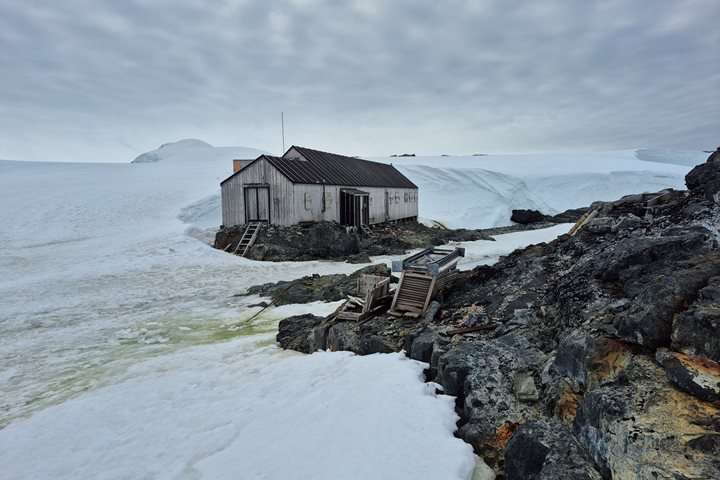Early risers onboard the National Geographic Endurance witnessed our entrance into the fog-laden boundary signaling the abrupt change in sea surface temperature that characterizes the Antarctic Convergence Zone, the transition into the waters that define the Antarctic continent. When we crossed the so-called polar front and emerged from the clouds, we were met by several species of Southern Ocean seabirds whose erratic flight perfectly matched the nature of the winds that whipped across the surface of every wave crest. Royal and light-mantled sooty albatrosses dipped low into the troughs, as pintado petrels and southern fulmars broke straight through the salt spray, pausing only to skim the surface or shake water from their wings. Winged wanderers continued to surround the vessel as we retreated indoors throughout the day to learn from expedition staff presentations - from photography tips to glaciology facts to a fun collection of Antarctic curiosities - all in preparation for the next several days of exploring. The excitement and anticipation of the past two days at sea culminated in a blast of the ship’s horn and a toast to crossing the Antarctic Circle just after dinner. We can hardly wait to set our eyes (and feet!) on the continent tomorrow.
2/28/2025
Read
National Geographic Resolution
Northbound Drake Passage, Cape Horn, and the Beagle Channel
This morning, we had a later start than usual after a late night enjoying the crew show. Our galley team gifted us with a fulfilling brunch. We then had a brilliant forum about climate change with the participation of our panel of experts onboard. Afterward, our expedition leader called us to the bow to see Cape Horn, which was only a few miles ahead. The good weather allowed us to have a smooth and fast crossing, allowing extra time to swing by Cape Horn, the most southern tip of the Americas. Over the PA system, Steven provided a very interesting description of the historical importance of this area, then Pablo read a beautiful poem, a memorial to the seaman lost at sea. We could see the monument in the distance, two metal sheets that depict an albatross in flight. During the afternoon, we enjoyed Madalena’s presentation about Women in Antarctica. This was an incredible voyage through the struggles and delays of allowing women to participate in science and logistics in Antarctica. We entered the Beagle Channel around 17:00 and we encountered black-browed albatrosses, cormorants, dolphins, and whales. On our final approach to the beautiful city of Ushuaia, we passed by Les Eclaireurs Lighthouse and some of the seals that live in the Bridges Islands Archipelago.

